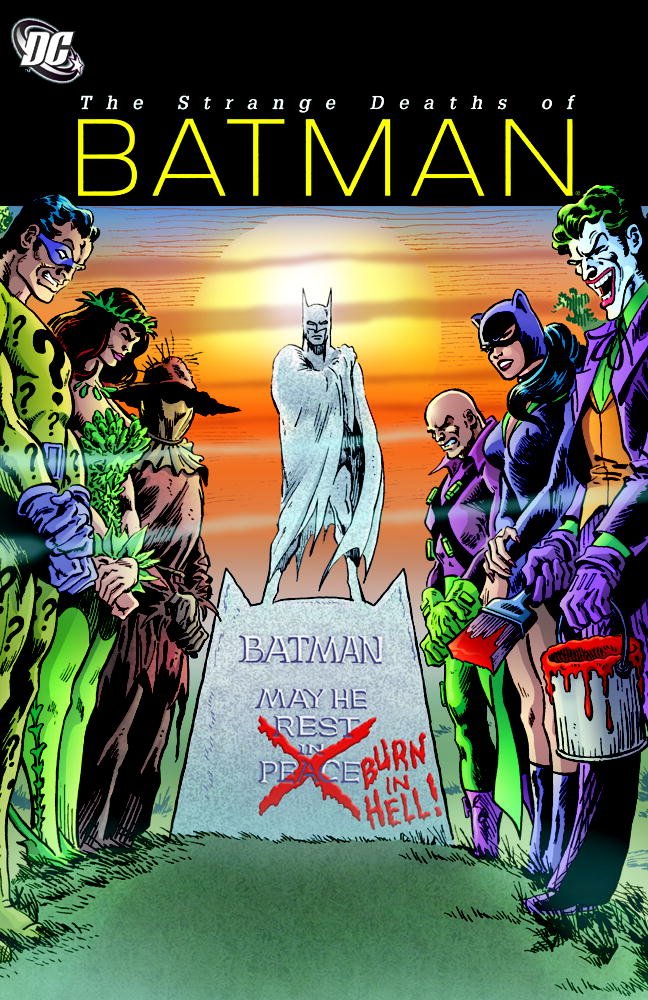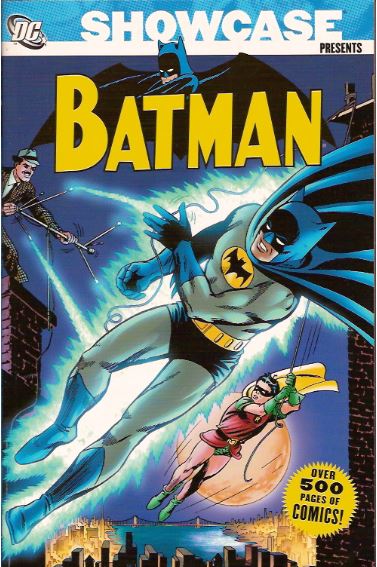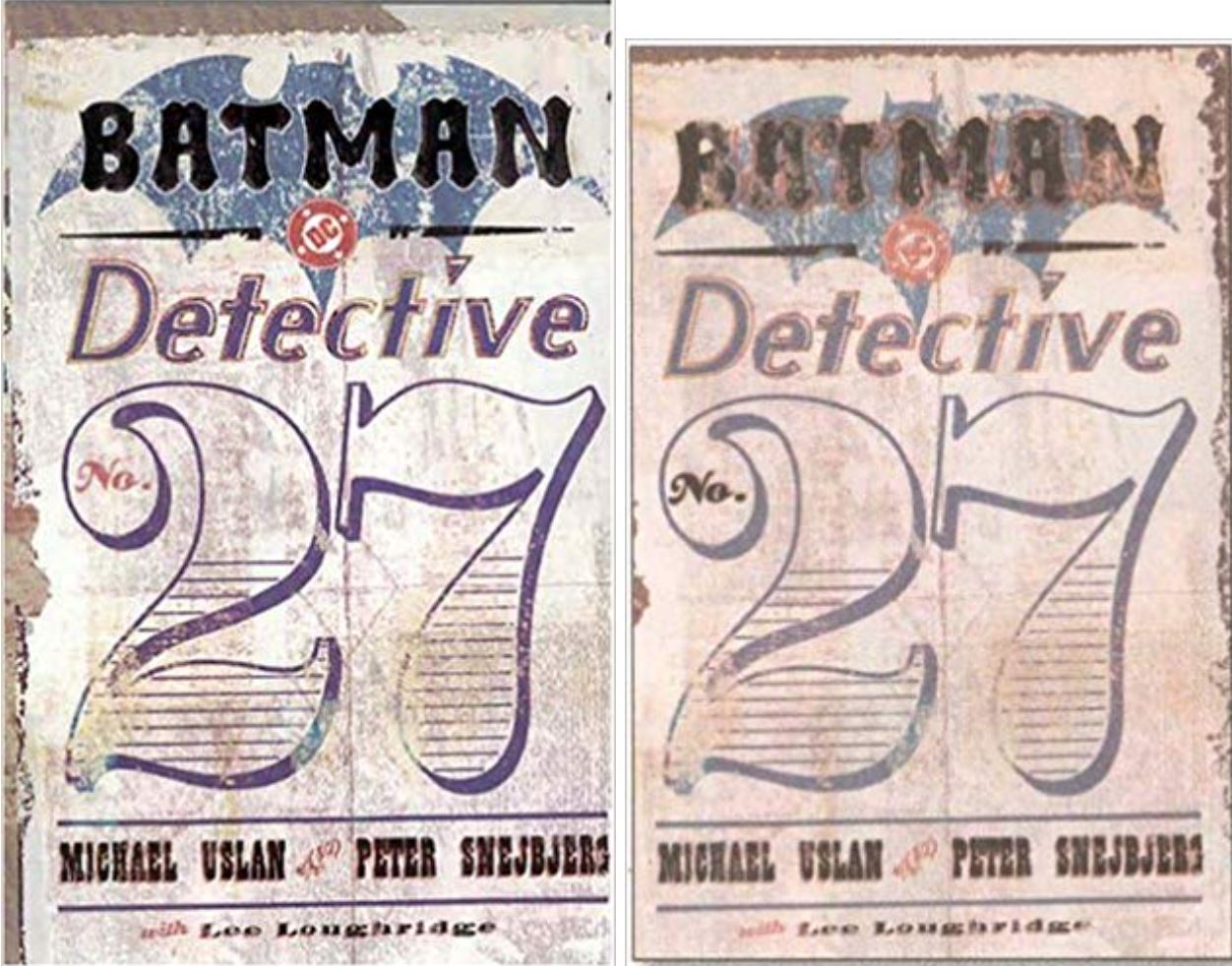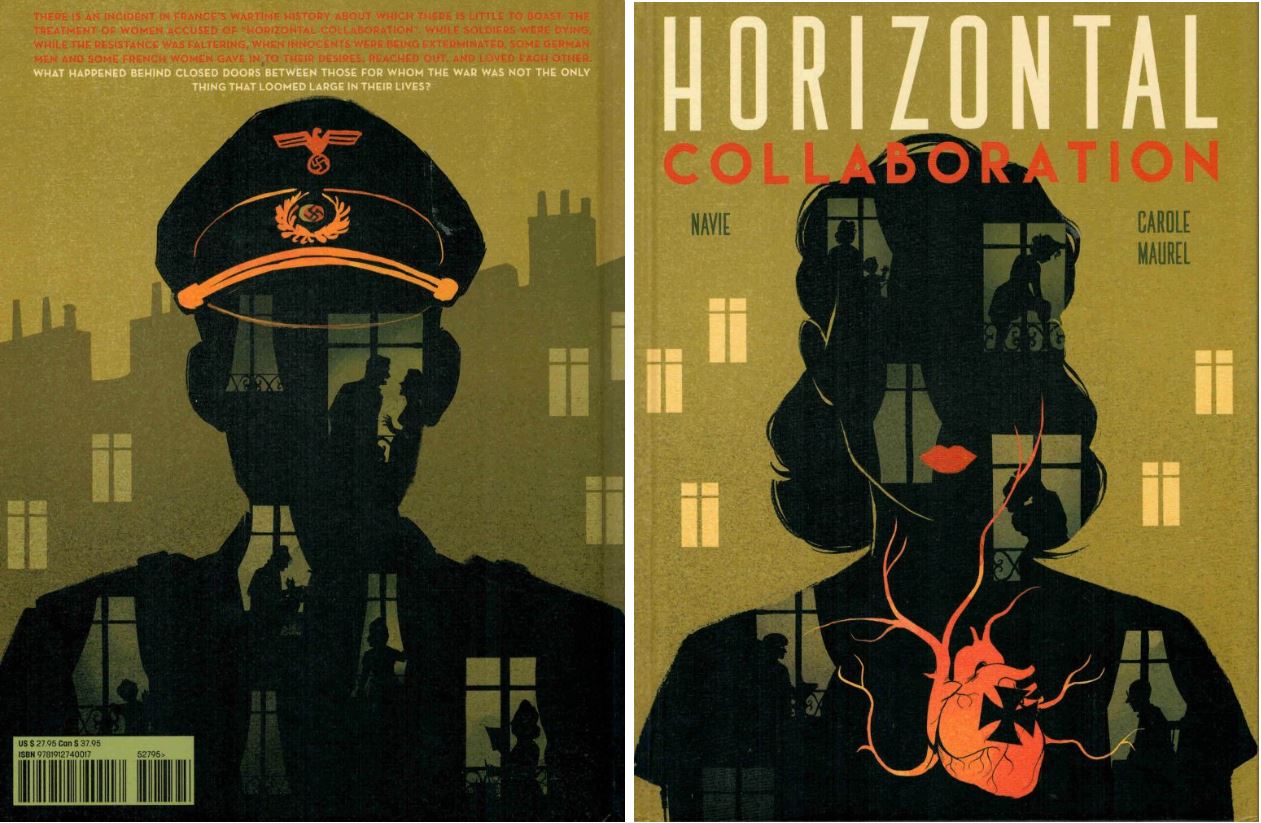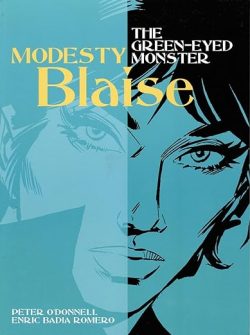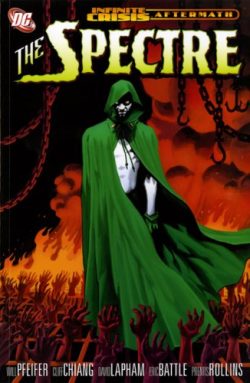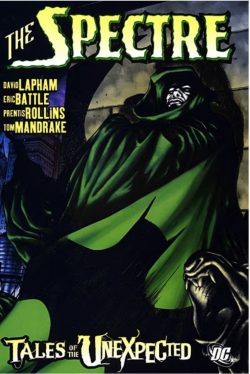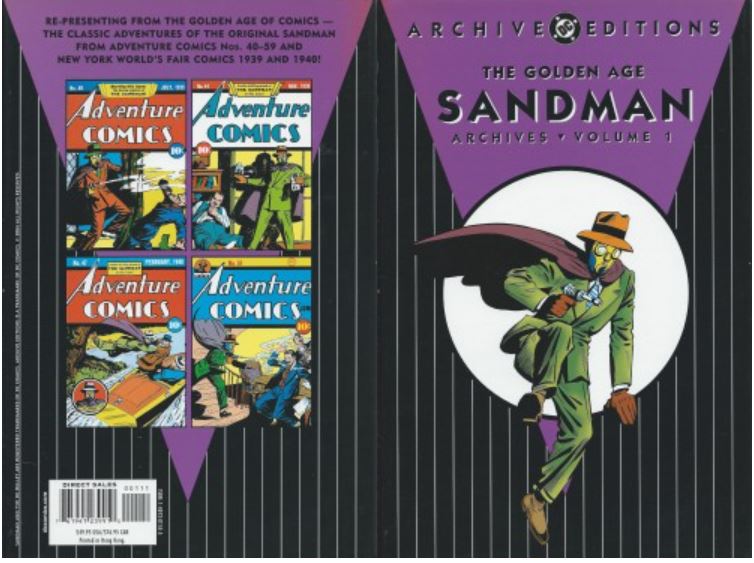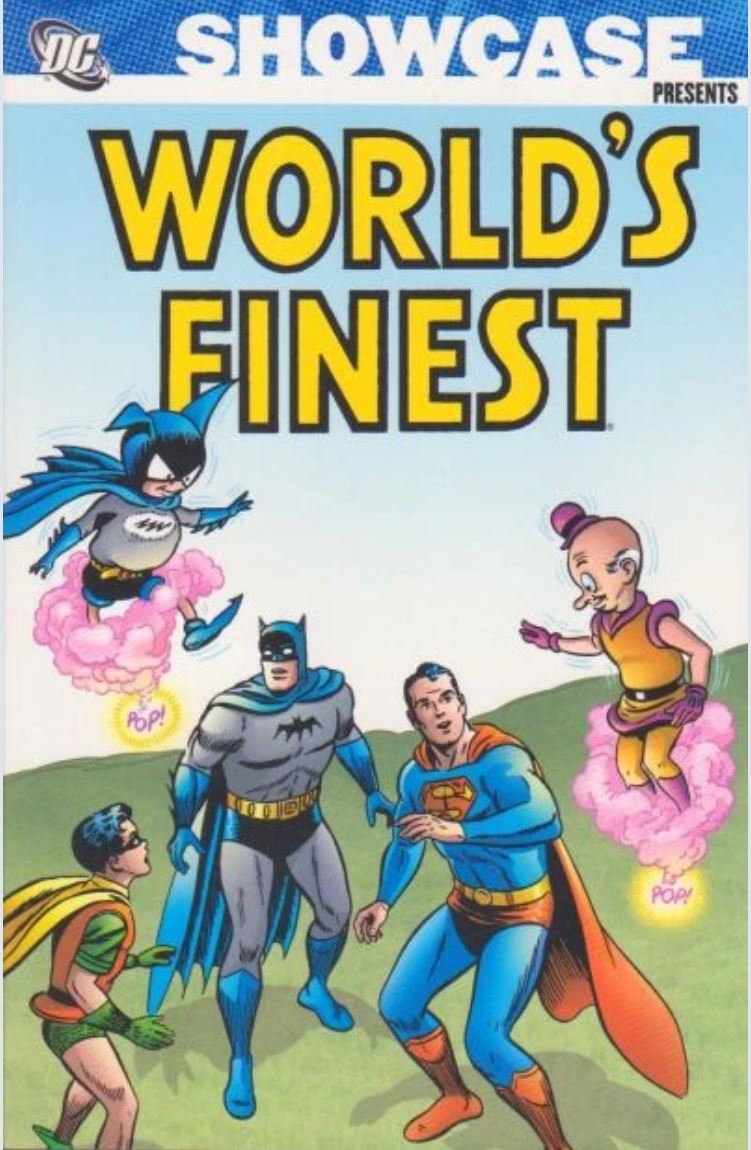
By Jerry Coleman, Bill Finger, Edmond Hamilton, Ed Herron, Dave Wood, Curt Swan, Jim Mooney, Dick Sprang, Sheldon Moldoff, Stan Kaye, John Forte, George Klein & various (DC Comics)
ISBN: 978-1-84856-053-6 (TPB)
For decades Superman and Batman were the quintessential superhero partners: the “World’s Finest” team. They were friends as well as colleagues and the pairing made sound financial sense since DC’s top heroes could cross-pollinate and cross-sell their combined readerships. This most inevitable of Paladin Pairings first occurred on the Superman radio show in 1945, whilst in comics the pair briefly met whilst on a Justice Society of America adventure (in All-Star Comics #36, August/September 1947) and perhaps even there they missed each other in the gaudy hubbub…
They heroic headliners had shared the covers of World’s Finest Comics from the outset, but never crossed paths inside, sticking firmly to solo adventures within. Once that Rubicon was crossed due to spiralling costs and dwindling page-counts, the industry never looked back…
This blockbusting monochrome chronicle gathers their cataclysmic collaborations from WFC #112-145, spanning September 1960 to November 1964, just prior to the entire planet going superhero crazy and Batman mad. Jerry Coleman, Dick Sprang & Sheldon Moldoff crafted #112, featuring a unique and tragic warning in ‘The Menace of Superman’s Pet’, as a phenomenally cute teddy bear from space proved to be an unbelievably dangerous menace and unforgettable true friend. Bring tissues, you big baby…
In an era when disturbing menace was frowned upon, many tales featured intellectual dilemmas and unavoidable pests. Both Gotham Guardian and Man of Steel had their own magical 5th dimensional gadflies and it was therefore only a matter of time until ‘Bat-Mite Meets Mr. Mxyzptlk’ in a madcap duel to see whose hero was best with America caught in the metamorphic middle. WFC #114 saw Superman, Batman & Robin shanghaied to distant planet Zoron as ‘Captives of the Space Globes’ where their abilities were reversed but justice was still served in the end, after which ‘The Curse that Doomed Superman’ saw the Action Ace consistently outfoxed by a scurrilous Swami with Batman helpless to assist him. Curt Swan & Stan Kaye illustrated #116’s thrilling monster mash ‘The Creature From Beyond’ as a criminal alien out-powers Superman whilst concealing an incredible secret, and all the formula bases were covered as Lex Luthor used ‘Super-Batwoman and the Super-Creature’ to execute his most sinister scheme against the heroes.
For #118 Sprang & Moldoff illustrated ‘The Creature That was Exchanged for Superman’ as the Action Ace is hijacked to another world so a transplanted monster can undertake a sinister search with the Dynamic Duo fighting a desperate holding action, after which ‘The Secret of Tigerman’ (#119 and inked by Stan Kaye) reveals a dashing new hero in charge as the valiant trio attempt to outwit a sinister criminal mastermind. Veteran artist Jim Mooney began illustrating Coleman’s scripts in #120, starting with ‘The Challenge of the Faceless Creatures’ as amorphous monsters repeatedly siphon off Superman’s powers for nefarious purposes before the Gotham Gangbuster is eerily transformed into a destructive horror in trans-dimensional thriller ‘The Mirror Batman’ and #122 (Kaye inks) sees an alien lawman cause a seeming betrayal by the Dark Knight, leading to ‘The Capture of Superman’…
Zany frustration and magical pranks were the order of the day in #123 as ‘The Incredible Team of Bat-Mite and Mr. Mxyzptlk’ (Sprang & Moldoff) returned to again determine whose hero was greatest, whilst ‘The Mystery of the Alien Super-Boy’ (#124, art by Swan & Moldoff) pits our heroes against a titanic teenager with awesome powers and a hidden agenda whilst ‘The Hostages of the Island of Doom’ (Mooney & John Forte) has Batman & Robin used as pawns to force Superman’s assistance in a fantastic criminal’s play for power.
Luthor’s eternal vendetta inadvertently created an immensely destructive threat in ‘The Negative Superman’ (#126, by Ed Herron, Mooney & Moldoff) stretching Batman and Robin’s ingenuity to the limit, after which ‘The Sorcerer From the Stars’ (Coleman) challenges the heroes to stop his plundering of Earth’s mystic secrets and ‘The Power that Transformed Batman’ (#128, Coleman & Mooney) briefly makes the hero a deadly menace.
Dave Wood, Mooney & Moldoff pitted the World’s Finest team against their greatest enemies in #129’s ‘Joker-Luthor, Incorporated!’ whilst Coleman & Mooney posed an intergalactic puzzle with devastating consequences for the heroes in ‘Riddle of the Four Planets!’ and Bill Finger, Sprang & Moldoff present a stirring action thriller when the team inexplicably add a surplus and incompetent fourth hero to the partnership in #131’s ‘The Mystery of the Crimson Avenger’.
With Finger as regular scripter, tense mysteries played a stronger part, such as when Superman was forced to travel back in time to rescue ‘Batman and Robin, Medieval Bandits’ (art by Mooney) and clear their names of historical ignominy, whilst #133 sees ‘The Beasts of the Supernatural’ (Mooney & Moldoff) leeching the Man of Steel’s power. The Gotham Guardian is hard-pressed to fool the mastermind behind those attacks after which the heroes battle for their lives against an alien dictator and ‘The Band of Super-Villains’ (Mooney)…
World’s Finest Comics #135 (August 1963, inked by Moldoff) was Sprang’s last pencil job on the series and a superb swansong as ‘Menace of the Future Man’ has the heroes valiantly and vainly battling a time-tossed foe who knows their every tactic and secret, after which ‘The Batman Nobody Remembered’ (Mooney & Moldoff) pitches a paranoid nightmare wherein the Dark Detective faces a hostile world which thinks him mad, before ‘Superman’s Secret Master!’ (#137, Finger & Mooney) seemingly turns the Action Ace into a servant of crime… until Batman deduces the true state of affairs.
Finger bowed out in #138 with ‘Secret of the Captive Cavemen’ as an alien spy’s suicide leads the heroes back 50,000 years to foil a plot to conquer Earth, after which Dave Wood, Mooney & Moldoff provide eerie sci fi thriller ‘The Ghost of Batman’ and a classic clash of powers in #140’s ‘The Clayface Superman!’ (Mooney) as the shape-shifting bandit duplicates the Metropolis Marvel’s unstoppable abilities…
A new era dawned in World’s Finest Comics #141 (May 1964) as author Edmond Hamilton and artists Curt Swan & George Klein ushered in more realistic and less whimsical tales beginning with ‘The Olsen-Robin Team vs. “the Superman-Batman Team!”’, wherein the junior partners rebel and set up their own crime-fighting enterprise. Of course, there’s a hidden meaning to their increasingly wild escapades…
In #142 an embittered janitor suddenly gains all the powers of the Legion of Super-Heroes and attacked the heroes out of frustration and jealousy in ‘The Composite Superman!’ after which the Gotham Knight suffers a near-fatal wound and nervous breakdown in ‘The Feud Between Batman and Superman!’: a condition cured only after a deadly and disastrous recuperative trip to the Bottle City of Kandor. Super-villains were growing in popularity and #144 highlighted two of the worst when ‘The 1,000 Tricks of Clayface and Brainiac!’ almost destroy the World’s Finest Team forever before this stellar selection ends on an enthralling high note as Batman is pressganged to an alien ‘Prison For Heroes!’: not as a cellmate for Superman and other interplanetary champions, but as their sadistic jailer…
These are gloriously clever yet uncomplicated tales whose dazzling style has returned to inform if not dictate the form of DC’s modern television animation – especially Batman: the Brave and the Bold series – and the contents of this tome are a veritable feast of witty, charming thrillers packing as much punch and wonder now as they always have.
© 1960-1964, 2008 DC Comics. All Rights Reserved.

